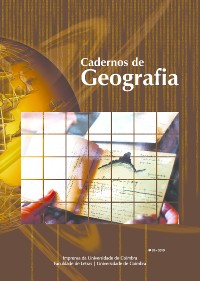Please use this identifier to cite or link to this item:
https://hdl.handle.net/10316.2/46951| Title: | BR-163: from “landless men” to “manless land” | Other Titles: | BR-163: “homens sem terra” para “a terra sem homens” | Authors: | Passos, Messias Modesto dos | Keywords: | Amazon;BR-163;PIN;indians;settlers;Amazônia;BR-163;PIN;índios;colonos | Issue Date: | 2019 | Publisher: | Imprensa da Universidade de Coimbra | Abstract: | Em 1970, o governo brasileiro deu início ao projeto de construção das grandes estradas na Amazônia, com
destaque para a Transamazônica, cortando a região de leste a oeste, e a BR-163, a Cuiabá-Santarém, de sul a
norte — estradas que se cortavam em forma de cruz e abriam eixos de penetração e integração. Em 16 de junho
de 1970, foi criado o Plano de Integração Nacional (PIN). O deslocamento de camponeses de áreas submetidas
à “pressão demográfica” é oficializado e o discurso de ligar o homem sem terra do Nordeste à terra sem homem
da Amazônia é posto em prática, de forma caótica e socialmente injusta. Em dezembro de 1974, a Cuiabá-Santarém
foi aberta ao tráfego. No Mato Grosso, a estrada motivaria a penetração de grandes projetos agropecuários
e de colonização comandados por grupos particulares. No Pará, no trecho entre Santarém e Rurópolis (no
entroncamento da Cuiabá-Santarém com a Transamazônica), predominaria a colonização dirigida para pequenos
proprietários, comandada pelo Instituto Nacional de Colonização e Reforma Agrária (INCRA). Ao longo de toda a
estrada, a valorização das terras, a atração de correntes migratórias e a especulação fundiária teriam impactos
imediatos sobre a população local — especialmente os povos indígenas. As nossas considerações finais permite-nos,
a título de conclusão, afirmar que as sucessivas mudanças dos “planos de desenvolvimento”, ao sabor das conjunturas
políticas e econômicas, contribuíram para a falência da grande maioria dos projetos de colonização. A
nossa conclusão está voltada para algumas variáveis que apontam para a insustentabilidade do modelo de desenvolvimento
regional: Um modelo excludente: no esforço de escolher uma imagem que seja reveladora do
ambiente da fronteira atual eu diria que esta é o da exclusão. Um modelo produtivista: após vinte anos é o
agronegócio que, notadamente no Mato Grosso, conhece o mais forte desenvolvimento, sustentado pela necessidade
do Brasil obter divisas a partir de produtos exportáveis como a soja. Deflorestamento e fragmentação
contínua das florestas amazônicas. In 1970, the Brazilian government started the project of building the large highways in the Amazon, highlighting the Transamazon, linking the region from East to West, and BR-163, known as Cuiabá-Santarém, from South to North — highways that crossed each other opened axes of penetration and integration. On the 16th of June, 1970, the Plan of National Integration (PIN) was created. The displacement of peasants from areas submitted to “demographic pressure” is made official and the speech of connecting the landless man of the Northeast to the manless land of the Amazon is put into practice in a chaotic and socially unfair way. In December 1974, the highway Cuiabá-Santarém was opened to the public. In Mato Grosso, the road would motivate the penetration of large agricultural projects and the colonization commanded by private groups. In the state of Pará, in the stretch between Santarém and Rurópolis (at the crossing of Cuiabá-Santarém and Transamazon), the colonization directed to small landowners is predominant, commanded by the National Institute of Colonization and Land Reform (INCRA). Along all the road, the appreciation of the land, the attraction of migratory currents and the land speculation had immediate impacts to the local population — especially the indigenous ones. Our final consideration allow us, for the sake of concluding, to claim that the successive changes in the “development plans” according to the political and economic conjunctures, contributed to the failure of the great majority of colonization projects. Our conclusion is directed to some variables that points to the unsustainability of the regional development model: An excluding model: in the effort of choosing an image which is revealing of the environment of the present frontier I would say that it is of exclusion. A productivist model: after twenty year it is agribusiness that, notably in Mato Grosso, has the strongest development, supported by the necessity of Brazil obtaining income from exportable goods such as soybean. Deforesting and continuous fragmentation of Amazon forest. |
URI: | https://hdl.handle.net/10316.2/46951 | ISSN: | 0871-1623 2183-4016 (PDF) |
DOI: | 10.14195/0871-1623_39_4 | Rights: | open access |
| Appears in Collections: | Cadernos de Geografia |
Files in This Item:
| File | Description | Size | Format | |
|---|---|---|---|---|
| br-163_from_landless_men.pdf | 5.6 MB | Adobe PDF |  |
Items in DSpace are protected by copyright, with all rights reserved, unless otherwise indicated.
